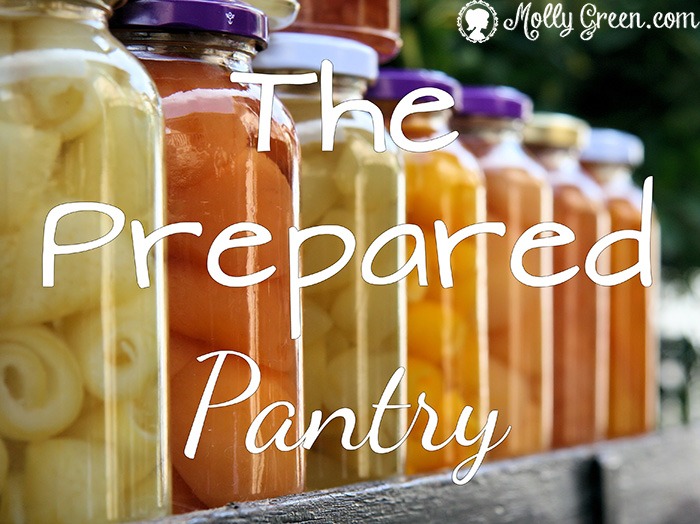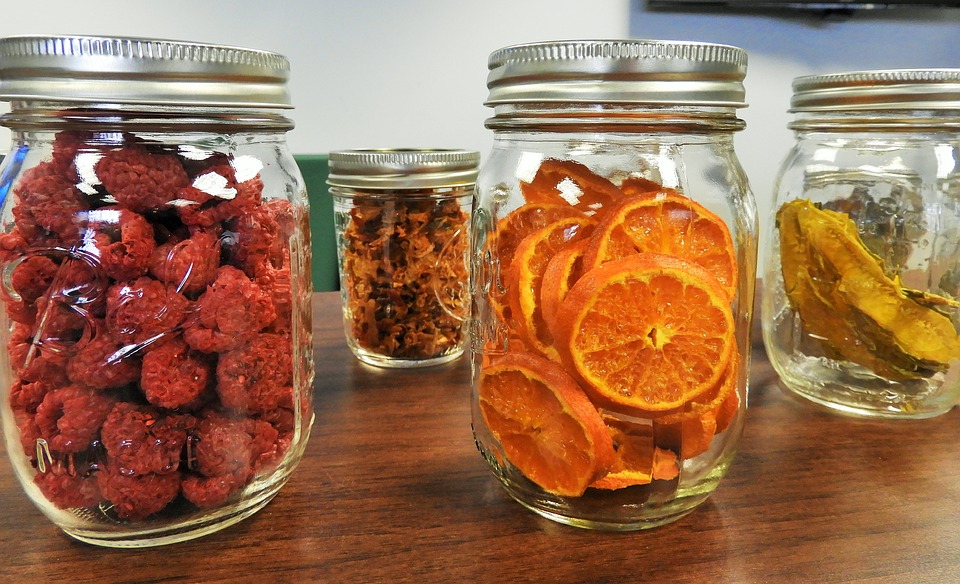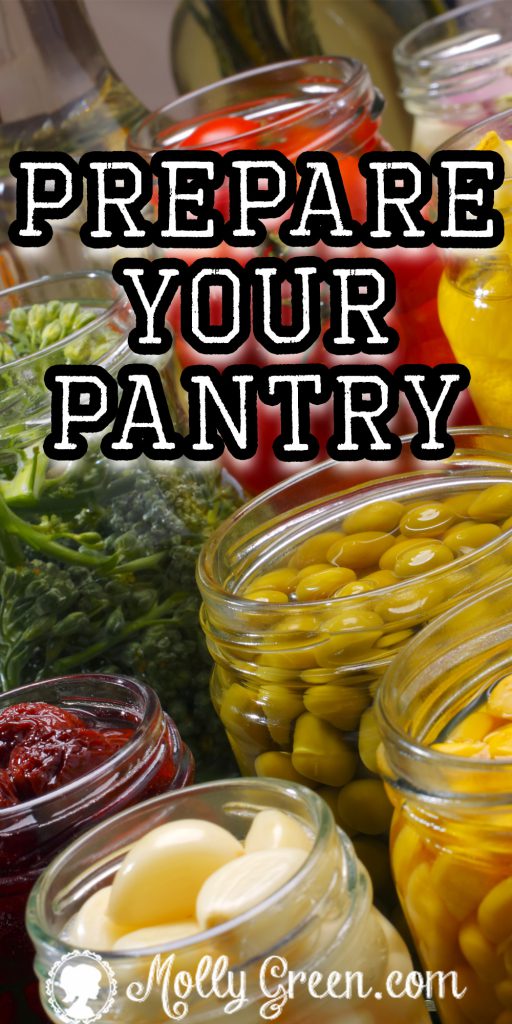by Lisa Barthuly
Keeping a prepper’s pantry takes time and deliberate planning, but I find the rewards are well worth it. I enjoy the fruits of our labor, knowing that should an emergency hit us (whether that emergency is unemployment, sickness, a weather-related disaster, or even manmade catastrophe), we will have food and the basics to care for ourselves and help others. I try to put up the pantry items we use most often, as well as the highest quality home-grown or local food and supplies for our family, by employing a variety of methods to keep our pantry stocked and our costs down. There is no “one size fits all” here. Every family is going to have a different set of priorities and plans in mind based on their unique situation.
We fill our pantry with seasonal fruits and vegetables from our garden, local farms, and a local food co-op. We will water bath or pressure can the bulk of the bounty. I have a neighbor who loves to garden and share her herbs, which she often has an overabundance of. I will vacuum seal the herbs in canning jars. I may find a fantastic sale or terrific coupon on band-aids or toothpaste and buy 50 or more, dirt cheap. I have a set of shelves in my pantry just for bulk first aid supplies. I have access to a wonderful food co-op via Azure Standard, where I can get bulk organic grains, fresh produce, bulk herbs, and so much more.
I package my bulk grains in large bakery buckets (food grade only) lined with Mylar bags that we seal our food into with oxygen absorbers; snap the lids on tightly and these can last upwards of 20 years. I buy bulk quantities in order to save money and get the best quality, and then package them into quantities that work for our family via canning, dehydrating, vacuum sealing, freezing, and such. I’m not big on traditional freezer storage. That puts us in a situation to be dependent on the grid. (There is even an in-home freeze drying machine available now—I cannot wait to try out one of those!) I also cook in bulk and do huge batches of canning or small batches of freezer cooking, making things such as granola in large quantities that I can store, vacuum-sealed in the pantry. What you do for your family might look different, but preparing for a rainy day, an emergency, or a disaster will help your family just the same!
How Do I Create Prepper Food Lists?
Mapping out a plan to stock your pantry is relatively simple; however, it can seem overwhelming if you’ve never done it. How do you stock your pantry on a budget? Where do you start? Start by writing down some food lists. What does your family eat, use often, or seem to always run out of? What meals make a regular appearance on your dinner table? Document a week of typical menus that your family consumes, and that will give you a good starting point. If your family loves rice dishes, but pasta dishes never make the top ten list of favorites, you know stocking up on more rice and less pasta is a good plan. Remember, just because you find something on sale, it is not a bargain if your family doesn’t like it. The thought, “If it’s an emergency situation, they’ll eat it!” does not hold true. If you have family members with special diets, you will also want to plan ahead for that.
How Many Pantry Items Should I Store in my Prepper’s Pantry?
My family loves home canned fruit. My husband is the only one who eats apricots; but everyone will eat applesauce. I plan accordingly by picking up one or two boxes of apricots at the local orchard at peak season, and seek out literally hundreds of pounds of apples in the fall to line our shelves with applesauce for the year. When canning up seasonal produce, I look at our annual use for my guide. At our homestead, green beans are on the menu once or twice a week. One quart usually does the job at a meal for our family.
1 Quart x 52 weeks = 52 quarts, that is my minimum goal, and I double it for a “maximum” goal. So, I know that each year I want to put up somewhere between 50 and 100 quarts of green beans. Some years the garden gives us an overabundance, some years … not so much. Knowing what your family eats on a regular basis, and stockpiling those ingredients when in season or on sale, is a great foundational “rule of thumb” when planning your prepper’s pantry. When it comes to stocking grains, this is where figuring out how much per family member gets a little trickier, at least for me. We cook and bake from scratch, for the most part.
I make up my own dry mixes for brownies, cakes, cookies, biscuits, and such, although I am not opposed to stockpiling cake or brownie mixes if I find them on a killer sale (and hey, it’s nice to have a mix around—quick and simple). So, just how many pounds of oats will I need to make hot breakfast oatmeal for the three family members who eat that, the two that eat my homemade granola, and the oatmeal cookies everyone loves?! Thankfully, there are some great food storage calculators online that make this pretty simple to figure!
Where Do I Put All of These Pantry List Items?
As you set out to stock up and build your home inventory (maybe even re-examine or jump start what you already have in place), jot down plans, ideas, and such—keep in mind your space. Where are you going to put these extras? What is going to work for your family? Do you need to re-evaluate your current system? When we were first married, we lived in a house that had very little storage space—but we took the largest kitchen cupboard and made it the “pantry cupboard.”
Something is better than nothing. Get creative. We’ve used areas (not seen) behind the couch for bakery buckets full of grains. We’ve stocked supplies under beds (did you know a #10 can is a perfect fit under the standard bed frame?), tucked away sealed buckets of salt in the barn, put up pet and animal foods in clean, sealed garbage cans, etc. I know a family that has a beautiful antique trunk in their living room (used as a coffee table) packed full of medical supplies and first aid gear!
The ideas are limited only by your imagination. In one home we lived in, my husband took a coat closet that was never really used and put up shelves measured out to fit my quart jars from canning. It held HUNDREDS of jars of canned goods! This is creative storage hidden in plain sight. You do not have to have a root cellar or an extra bedroom to pull this off. (Although those would be quite handy!)
I can guarantee that even one cardboard box or plastic tote, carefully and lovingly prepared for your family, will be a huge blessing in the next power outage, storm, or unexpected event. And it can easily be stored in a closet or cupboard. Take some time and give your storage or pantry space some thought. Plan menus and break down ingredients. Couple that list with a list of basics—such as flour, grains, spices, baking soda, and canned fruits and veggies—and you’ve got a great jump-off point to start you on your way to a prepared pantry!
What about you- do you have a plan for your pantry?
Lisa Barthuly lives in the mountains of the American Redoubt with her family. She is a Follower of Yeshua, Torah Lover, Helpmeet, and Mama! Visit her at her “homestead on the Web” at: www.HomesteadOriginals.com/blog and for homemade recipes utilizing essential oils, check out her book, A Simply Homemade Clean, available at www.HomesteadOriginals.com








Wow! Seems like a great idea!
I’d love a stock pantry of whole foods!